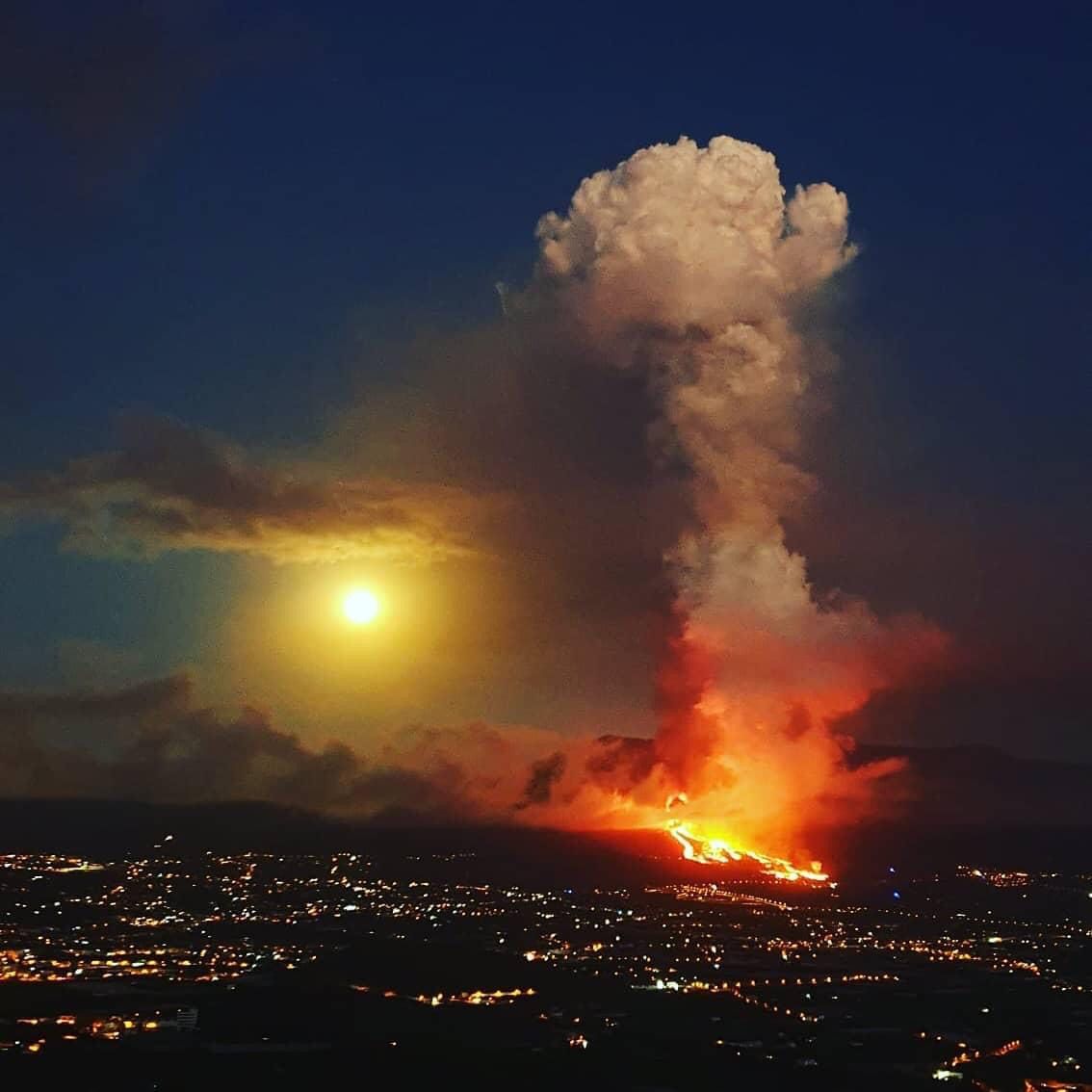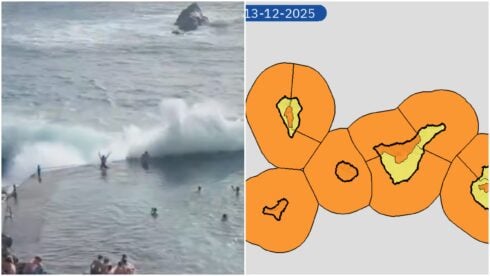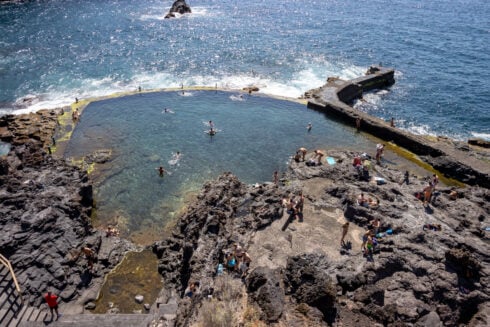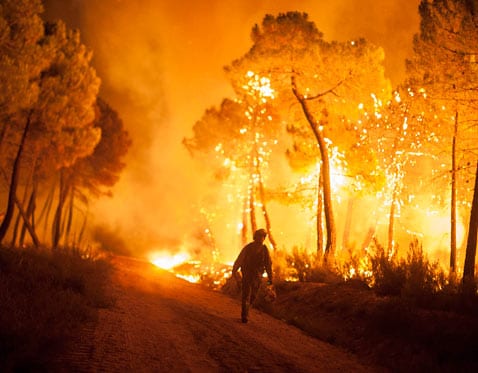ALMOST every day for the 12 years since he has worked as a tour guide on the beautiful lush island of La Palma, in Spain’s Canary Islands, Jonas Perez has told visitors about ‘active but dormant’ volcano that dominates the landscape.
But it wasn’t until Sunday at 3.12pm, the moment when a vent ripped open in the Cumbre Vieja volcanic ridge spewing hot lava into the air, that the 44-year-old truly understood the reality of it.
“It provokes very mixed feelings,” he told the Olive Press over the telephone from La Palma. “By day it’s devastating watching the lava eat up land and properties as it slowly moves towards the sea.
“But at night when red hot lava is shooting up 30-40 metres into the sky and the landscape glows a deep red with the moving lava, it is the most enthralling spectacle you’ll ever see.”
Perez, his wife and their four-year-old twin daughters are among the 5,000 or so residents who were evacuated from their homes in the hours immediately after the volcano erupted following a week of seismic activity that led to authorities raising the alarm for a possible eruption.
“We packed up everything, got in the car and drove to the other side of island to stay with my parents,” explained Perez, who lives in Puerto Naos where he runs Isla Bonita Tours.
So far, his home is not among the 160 or so that by Tuesday morning had been swallowed by rivers of black lava cutting a devastating swathe through the landscape as they advanced down the volcano’s western flank towards the sea.
“Whether our homes are destroyed or not is completely down to luck,” admitted Perez who said there was little hope of returning to the zone within the next few months.
“The lava flow has wiped out roads, cutting off areas of the island, that will require weeks of work to rebuild,” he said.
Authorities estimate around 10,000 people will be displaced during the eruption which could last weeks. The last time the volcano was active in October 1971, the eruption lasted 23 days.
Experts say that if and when the lava reaches the sea, it could trigger more explosions and clouds of toxic gases threatening marine life.
Although in the short-term those who work the tourism sector are affected by the volcano, Perez is optimistic for the future, in terms of his own job security.
“Obviously La Palma isn’t a place for tourism right now, but within a few months it will open again and I think more people than ever will be attracted to the island to see the aftermath of the volcano,” he said.
But he fears the volcano could prove catastrophic for the island’s economic mainstay, that of agriculture which accounts for 50-60% of the island’s GDP.
“The lava flow is heading towards banana plantations and could wipe them out, but also destroy the irrigation systems that are in place. So even if the plantations aren’t hit, the water supply will be and that amounts to the same.”
READ ALSO:
- VIDEO: Homes swallowed up by molten lava in volcano eruption on La Palma in Spain’s Canary Islands
- WATCH: Volcano spews lava on Canary Island of La Palma in Spain
- IN PICS: Dramatic images of volcano erupting on La Palma in Spain’s Canary Islands
Click here to read more Canary Islands News from The Olive Press.












